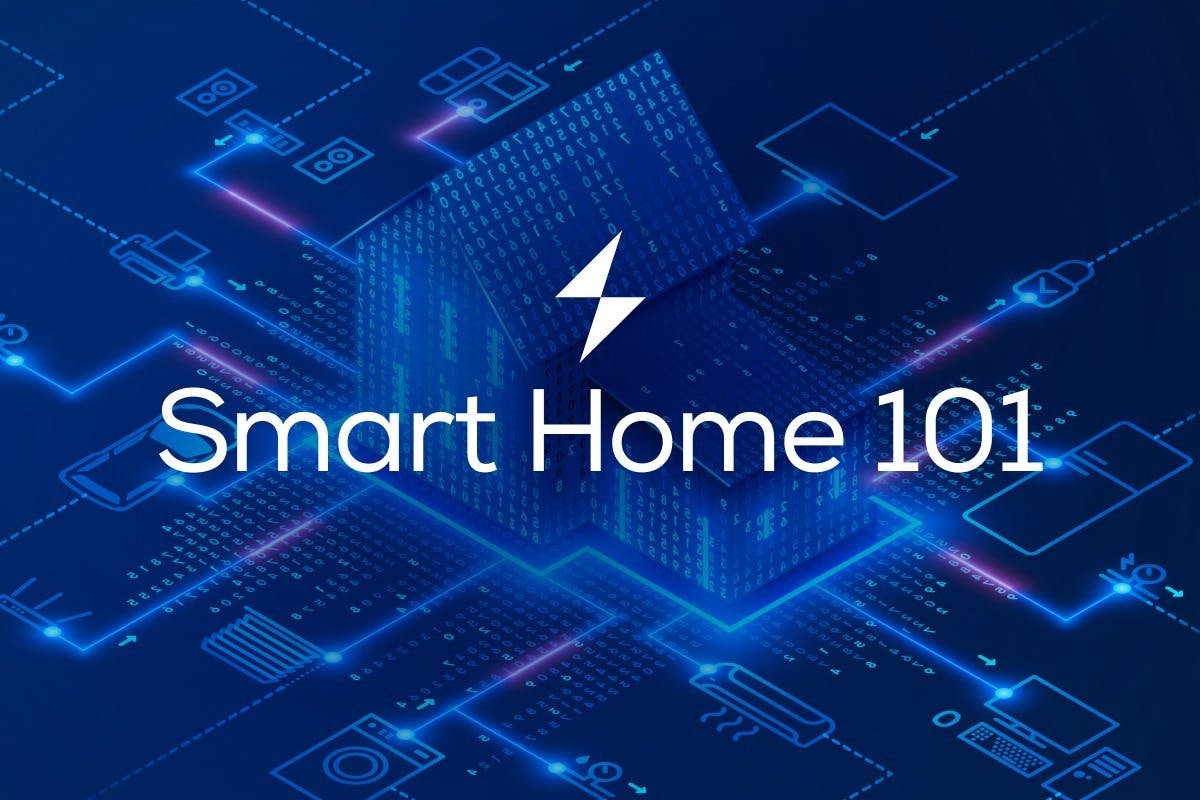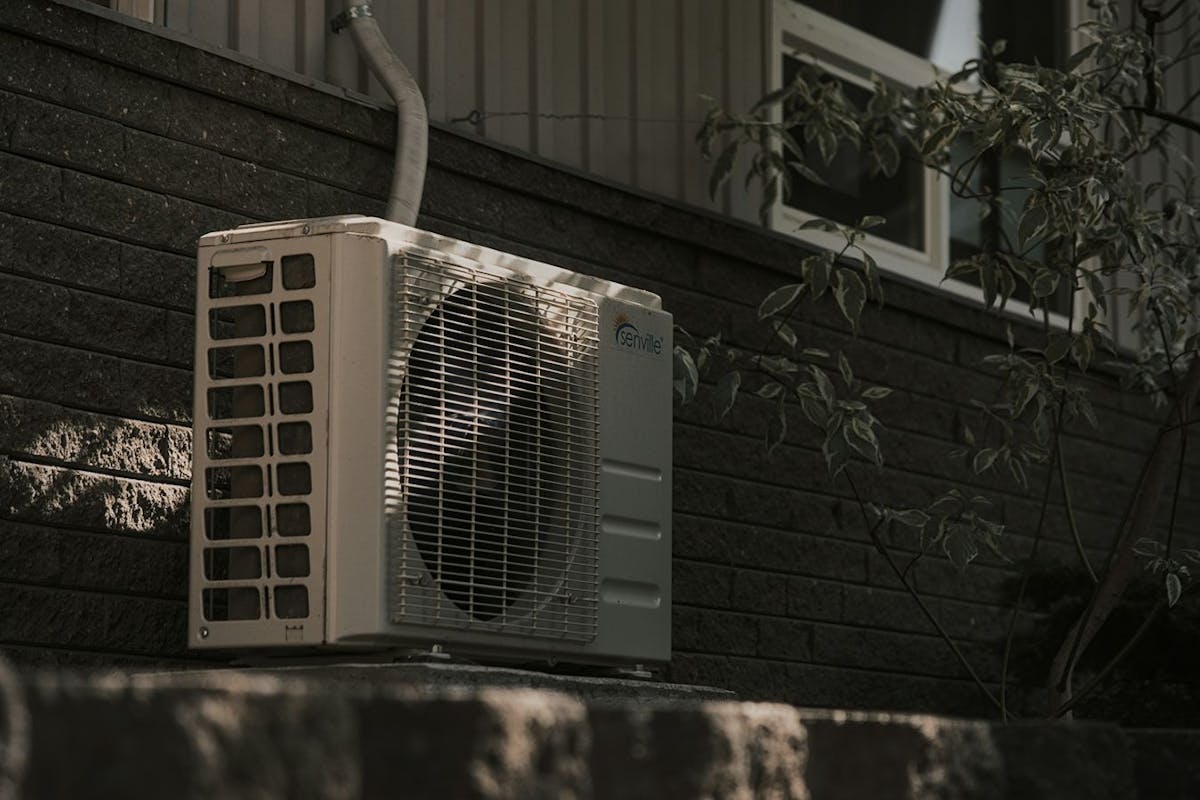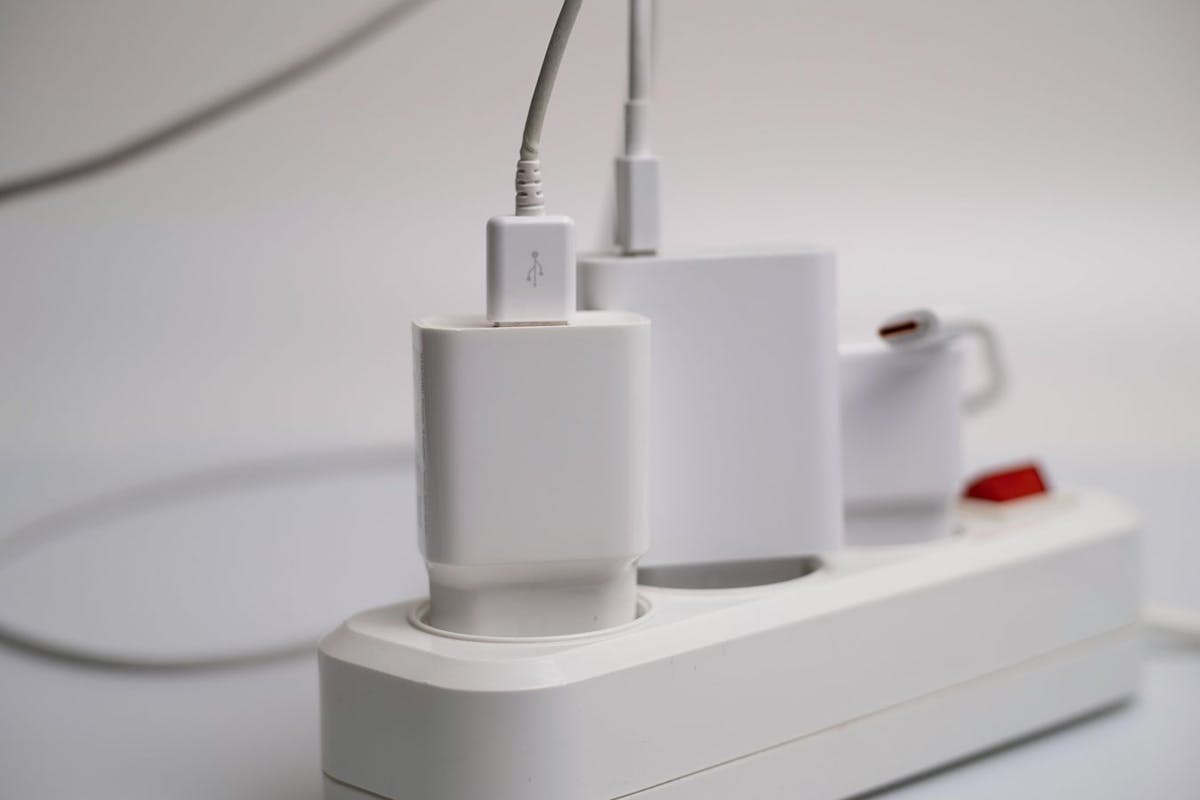What Is a Smart Home? Smart Devices and Smart Home Functions
Last edited

Author
Andrew Blok
Electrification and Solar Writer and Editor

Editor
Ryan Barnett
SVP, Policy & New Market Development

Maybe you’ve seen or heard a lot about smart homes and smart devices. Some of it makes sense. At the same time, you aren’t ready to go to everything being high-tech and robots in your home. No problem. Devices like robot vacuum cleaners, smart thermostats, and smart locks can be an easy step toward saving energy, saving money, saving time, and adding safety.
Smart home upgrades aren’t necessarily about becoming the Jetsons overnight or having a robot dog walk your real dog. Here are some considerations about the basics of smart home benefits and how you can start with upgrades that make sense for your home.
See how much you can save with home energy changes
Smart Home Definition
A smart home is a system where household devices are connected via a wireless network and can be automated to perform certain tasks. The goal of a smart home is to help your household run more efficiently by syncing up and automating the operations of these connected devices.
Smart home devices can be anything from smart thermostats with specific schedules to kitchen appliances that turn on at a specific time to smart lights adjusting their brightness to the time of day.
You can program your connected appliances based on your preferences and the function you would like them to perform. Your smart devices then communicate with one another via bluetooth, your home’s Wi-Fi, or other wireless signals to ensure the work gets done.
What is the Internet of Things?
The Internet of Things (IoT) is a techie term for physical objects (“things”) that contain sensors, processors, software, and other technologies that allow them to connect together and exchange data with other devices over the internet or other communication networks.
Smart devices can use the internet to share data, network with one another, and communicate online.
Benefits and Drawbacks of a Smart Home
If you’re considering investing in smart home technology, it's wise to weigh the advantages and disadvantages of creating such a home before you begin the transition.
Smart home benefits
There are five core perks of turning your home into a smart home.
Energy efficiency: Smart devices can save energy by working only when you need them. For example, smart home lighting systems can use sensors that detect when you aren’t in a room and turn off, or be set to a schedule.
Convenience: Smart devices are often designed to be hands-free and automatic, like shades that draw themselves to keep a room cool during certain times of day or appliances that turn on with a simple voice command.
Home automation: Smart home devices can communicate with one another to perform their functions, like turning on your favorite music when you get home.
Home security: Anti-theft systems, cameras, and smart locks improve the safety of you and your family. Many smart devices allow you to check on your house when you aren’t there.
Save money: While smart home devices may cost more up front, used correctly, they could reduce your energy bills.
See how much you can save with home energy changes
Smart home drawbacks
There are four potential disadvantages to consider when you’re planning a smart home.
Cybersecurity concerns: While smart cameras and lock systems can increase your physical security, they can potentially make your private information vulnerable to malware or hacking. Just like you protect your private information online with passwords, you should take steps to do the same with your smart home. When shopping for smart home devices, pick brands you trust that invest in keeping your information secure.
Internet-dependence or power-dependence: Look for devices with analog or battery backups for functions you can’t do without during a power or internet outage.
Installation costs: The higher quality devices you buy, the more money you will usually need to invest. Conduct a cost-saving analysis if saving money is your main goal.
Learning curve: Installing smart devices, especially for the first time, can be difficult for beginners. Incorporating new devices into existing setups can require ironing out unexpected wrinkles.
Examples of Common Smart Home Devices
Nearly every existing appliance and device in your home has a smart counterpart, including these now-common smart home products:
| Device | Common uses |
|---|---|
| Smart thermostat | Control heating and cooling with energy efficiency |
| Smart plugs | Control appliances for efficiency and safety |
| Smart locks | Home security |
| Smart lights | Control lights for safety and efficiency |
| Smart cameras | Home security |
| Smart electrical panels | Control of home power, safety measure |
| Smart sensors | Safety and detection of potential problems |
The Smart Home Hub
The most important element of a well-functioning smart home is the smart home manager. This is the device or app that serves as the smart home hub from which you can control and remote control all of your other gadgets and devices, and often determines what devices can work together. New standards, like Matter, are making device compatibility easier across platforms. Examples of common smart home hubs include:
These digital assistants all come with companion smartphone apps that allow you to set and modify the preferences of all your linked devices. Many of them are also smart speakers that can be voice-activated to enable hands-free operation.
See what home electrification can do for you:
Creating a Smart Home
Designing your dream smart home could be well within reach, as nearly any home could become one with the right devices. Since there is often no need for large remodels or contractors, you can usually take many of these six steps yourself.
Choose a smart home hub
Your smart home manager helps your devices communicate with one another, and with you. Consider selecting a smart home manager with a speaker that allows you to use voice activation to perform tasks, such as turning on music or setting reminders. Many also include a smart display that can show you the status of smart devices, or feed in things like live video from security cameras.
Install smart plugs
Smart plugs are basically Wi-Fi-enabled adapters that connect the plugged-in device with your smart home manager. This is one of the easiest ways to get started with smart home technology, and a typical first step for many homeowners. Smart plugs allow you to set up the automation for your electronics as well as enabling voice commands to control power to those devices.
Add smart devices
Whether you are going all-in and upgrading your appliances to smart ones or just starting with a select few, you need to make some decisions about how to build your network. A good place to start is either with a smart thermostat or smart light bulbs, both of which can help you start saving money on your electricity bill from day one.
Upgrade your Wi-Fi
The more devices you have connected to your Wi-Fi, the more powerful your home network needs to be. You can increase your Wi-Fi power by:
- Upgrading to faster Wi-Fi
- Placing your router in a centralized spot that best reaches all of your devices
- Keeping your router and its software updated
- Getting a Wi-Fi extender or mesh network to cover devices that struggle to reach your router signal
Invest wisely
To save money when building your smart home system, you can gradually work your way up to more advanced devices. For example, determine which smart devices could serve you best in the beginning and add devices over time rather than all at once.
Once you’ve got the basics covered, the possibilities are endless when it comes to adding devices to your smart home system and expanding its capabilities!
See how much you can save with home energy changes
Keeping Your Smart Home Safe
One final step to creating a smart home haven is to ensure you are protected with cybersecurity safety measures. As we discussed earlier, it’s important to keep your smart devices safe from hacking or malware. You can accomplish this by taking the following steps:
- Buy electronics from reputable brands and stores
- Avoid using the same password for every device
- Utilize two-factor authentication
- Set up a unique wi-fi router name
- Make strong passwords for each smart home device
- Disable features you do not plan to use
- Keep all of your devices up to date
Even the most high-tech gadgets are vulnerable to cybersecurity threats if they are not properly protected. Research your devices before you purchase them to identify any potential issues and do everything you can to protect your privacy and personal information.
How Smart Homes Work
When you have many smart devices working together on one network, you can virtually instruct them to work together to accomplish advanced goals. The ultimate goal is to create a seamless lifestyle that could look something like this:
- As you approach your home after a long day of work, your garage door opens for you automatically because it senses your smartphone pulling into the driveway.
- Since your smart garage door opener communicates to your door lock that you have arrived home, the front door is opened before you exit your car.
- Exactly when you step inside the door, your favorite music begins playing, and the lights are perfectly dimmed for evening time.
- Upon entering your living room, your smart home manager asks whether you're in the mood to watch on TV or listen to music as you settle in to relax for the night.
While this may sound like a scene straight from a utopian story, this is what was envisioned by the pioneering engineers in the smart home industry, and what is increasingly possible with current smart home technologies.
Smart devices can help you take control of how your home functions, making it more convenient and comfortable, and even more energy efficient. Smart lights, plugs, thermostats and more can be part of a meaningful reduction in your energy bills.
Smart devices and solar panels can both let you take greater control of your home. Solar panels let you produce your own electricity and smart devices can let you use it most efficiently in ways you truly enjoy.
To find out what you could save with solar panels, contact a Palmetto solar expert or estimate your savings with the free solar savings calculator today.
See what home electrification can do for you:
Frequently Asked Questions
Is a smart home worth it?
Some smart home devices, like smart thermostats, are designed to save you money. Others are for convenience more than savings. Different devices may be worth it in different ways.
What devices can make up a smart home?
The possibilities are nearly endless. Common smart home devices include smart thermostats, plugs, light bulbs, door bells, outlets, and speakers.
Can a smart home save you money?
Some devices, like smart garage door openers, won’t save you money, but others can. Smart thermostats can reduce your heating and cooling bills, while smart plugs can reduce the electricity you waste on energy vampires.


